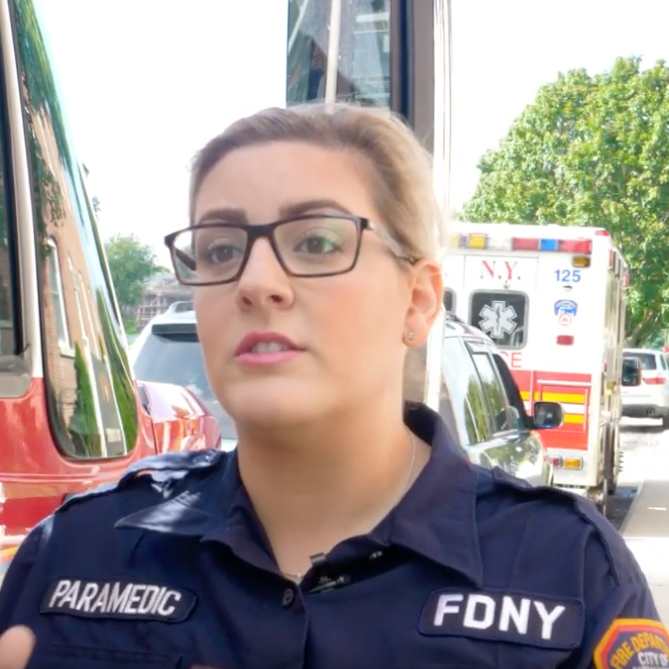
The breadth of the crisis that the 4,500 members of AFSCME Local 2507 (District Council 37), which represents the EMTs, paramedics and fire inspectors of the New York City Fire Department (FDNY), are facing is unparalleled.
Some anecdotal figures provide context.
On a typical day, the 911 EMS system may field about 4,500 calls; since COVID-19 settled and spread throughout the city, calls have spiked to upward of 6,000 and 7,000 per day, according to Lauren Hartnett, a paramedic and a member of Local 2507’s executive board. That’s more calls than were received after the Sept. 11, 2001, terrorist attacks.
The ranks of EMS workers have been thinned dangerously – down some 20%, according to Hartnett, due to members having to self-quarantine, as well members having to take a break after working to exhaustion.
Under an emergency mandate, EMS professionals are pulling grueling 16-hour shifts instead of their normal eight-hour shifts, Hartnett said. Once done working, some EMS workers are sleeping in their cars, fearful of infecting their families. Hartnett said that during a recent roll call, a member passed out, having worked through five or six straight shifts.
The situation is “like pulling blood from a stone,” Hartnett said. “Our guys want to work. It’s exactly what they’ve been training to do since they got into EMS.”
Requests that the local has made to the city for an alternative work schedule with 12-hour shifts alongside 16-hour shifts, but which preserve the vital two days off for recovery and recuperation, has been met with silence, Hartnett said.
“Management doesn’t want to entertain it,” Hartnett said. In fact, workers who are unable to meet the shift requirements are similarly being threatened with docked paid leave.
Another massive hurdle is the set of stipulations that have been put in place around when EMS workers are able to use protective masks. The 50 N-95 respirator masks EMS workers used to go through per day has turned into 5,000, Hartnett said. In an effort to conserve the masks, the city has said the masks can only be used on a limited basis, such as for cardiac arrests, intubations or when administering aerosols.
However, workers never know if a patient they’re treating may be suffering from COVID-19. If they use N-95 masks in those cases, not only will new ones not be issued, but EMS workers are again being threatened with discipline, Hartnett said.
That sort of red tape, she said, is “far too restrictive. We still have to go home to our families.”
Being able to take extra precautions, much less being able to take basic precautions, is not a luxury the members of Local 2507 enjoy any more.
“My husband is a firefighter at home on quarantine. We had this conversation when this first started that one of us is bound to get [COVID-19],” recalled Hartnett. “But we don’t have kids at home. We don’t have elderly parents. We’ve been isolating ourselves from our family. But a lot of my members don’t have that luxury.”
Some relief has come in recent days: the Federal Emergency Management Agency is sending in 250 ambulances and 500 EMTs.
But, said Hartnett, “Our guys are still getting run down.”